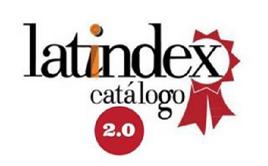Submissions
Submission Preparation Checklist
As part of the submission process, authors are required to check off their submission's compliance with all of the following items, and submissions may be returned to authors that do not adhere to these guidelines.- The submission falls within the types of collaborations admitted by the magazine and conforms to the policies of said section.
- The submission file is in Microsoft Word format and meets the requirements set forth in the Author Guidelines. Special attention will be paid to compliance with the originality guideline.
- If the work is sent to a peer-reviewed section, the title page (with author data) and the blind main document (anonymous) are attached separately.
Research articles
Document that presents in detail the original results derived from basic and/or applied scientific research projects or works with a quantitative, qualitative or mixed approach.
Pedagogical contributions
Document that develops innovative aspects of university teaching of accounting, administration, and related disciplines.
Theoretical/conceptual articles
Document that analyzes and/or describes existing concepts, variables, hypotheses, models or theories related to a new approach.
Methodological articles
Document presenting a new methodological approach or modifications to existing methods. Empirical data is sometimes used, but only to illustrate the proposition.
Articles of analysis and/or comparison of regulations
A document that is based on a particular standard or multiple standards. You can examine: motivation/interest; regulatory history; main features; innovative or conflicting issues, implementation exceptions, specialist opinions; advantages, disadvantages and recommendations from the author's point of view. In the case of comparisons, successive standards can be contrasted chronologically or from different fields (national-international), emphasizing the changes or differences between them and their implications.
Reflection articles
Document that analyzes from the author's perspective a phenomenon from reality, making criticisms and proposals based on a background framework (theoretical, empirical, works by other authors). Generally, it contains: an introduction and description of the general theme, alternative positions on the subject, and the position of the author.
Summaries of postgraduate theses
Document that synthesizes part or all of the thesis work developed to qualify for a postgraduate degree -master's or doctorate- in the area of administration sciences, which have been defended and approved.
Summaries of specialization final projects
Document that synthesizes part or all of the work developed to opt for a specialization degree in the area of administration sciences, which has been defended and approved.
Book Reviews
Document containing critical presentations on the literature of interest in the publication domain of the journal.
Guest Author
Document that contains critical reflections on current and/or interesting issues in accounting, administration and related disciplines, made by recognized and experienced authors in the area.
Letters to the editor
Document that contains critical, analytical or interpretative positions on the documents published in the journal, which in the opinion of the Editorial Committee constitute an important contribution to the discussion of the subject by the scientific community of reference.
Translations or transcriptions
Document that contains translations of classic or current texts, or transcriptions of historical documents or documents of particular interest in the publication domain of the journal.
Artículos de investigación científica
Se somete a arbitraje
Copyright Notice
Aquellos autores/as que tengan publicaciones con esta revista, aceptan los términos siguientes:
- Los autores/as conservarán sus derechos de autor y garantizarán a la revista el derecho de primera publicación de su obra, el cuál estará simultáneamente sujeto a la licencia Atribución-No Comercial 4.0 Internacional CC BY-NC 4.0.
- Los autores/as podrán adoptar otros acuerdos de licencia no exclusiva de distribución de la versión de la obra publicada (p. ej.: depositarla en un archivo telemático institucional o publicarla en un volumen monográfico) siempre que se indique la publicación inicial en esta revista.
- Se permite y recomienda a los autores/as difundir su obra a través de Internet (p. ej.: en archivos telemáticos institucionales o en su página web) una vez publicado su trabajo, lo cual puede producir intercambios interesantes y aumentar las citas de la obra publicada. (Véase El efecto del acceso abierto).
Privacy Statement
The names and email addresses entered in this journal site will be used exclusively for the stated purposes of this journal and will not be made available for any other purpose or to any other party.
















